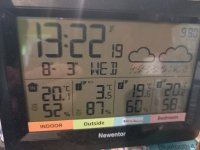I had read it was the solar effect that 'recharged' the soil during the day, hence why they shouldn't be too deep. If you take the energy out the surrounding soil then it needs to be restored from either surround soil or from the sun. Deeper vertical bores will heavily rely on soil thremal conductivitey and have no solar effect.
Think about going to the beech on a hot summer's day. Yes the sand will be hot on the surface but dig less than a foot down and sand quickly becomes cold. Soil is the same, dig down a foot or two and you'll find the temperature is much colder. This soil temperature a few feet down doesn't change much, in the height of summer or the middle of winter the temperature of the soil only a short distance from the surface remains largely the same temperature.
If the Sun warming the soil was how these system's worked then they would be terrible in the winter when you want them to work and brilliant at heating your house in the summer when you don't want them. Also these systems can work in reverse to cool your house in the summer, so you don't want to be trying to expel heat energy from the house into hot earth on warm summer's days.
These systems work like air-conditioning. They use a compressor to compress a liquid or gas, when you compress liquids and gasses they get hotter and increase in pressure. When you drop the pressure, you loose heat. So the compressor pushed the compressed hot fluid into the house. It then radiates the thermal energy into the house and looses pressure. The now cold fluid runs into the ground, heated buy ground temperature, to return to a normal temp, then the compressor warms it up again.
In a car air conditioning system the "house" would be the condenser under the bonnet, and the ground outside would be the evaporator in the cabin. condenser gets hot, cabin gets cold.
It doesn't matter how deep you go with the pipes because its the constant temperature you want. If the system was reliant in anyway from the heat of the sun then it wouldn't work at all on an over cast day or in the middle of the winter when the ground is frozen or covered in snow.
The pipes laid out across the garden is "easier" because you don't need a hole boring machine and ground survey to install the system, just bury the pipes a few feet down and be done with it. But it takes up far less space to just drill a vertical hole into the ground and fit all your pipes in a small patch of ground which is much better for modern houses with small gardens.
Looking at research papers the average 1m temperature for soil is 8.8'C in the north of Scotland and 12.7'c in the south of England.
Now answer this. If there is snow on the ground and puddles are literally frozen over with an air temperature of say -3'C then how can the sun be heating the earth below that to 12'C ?
You’re right about the solar effect providing the heat, geothermal doesn‘t have much effect until you go much deeper.
In summer the soil temperature rises so as you go deeper then the soil / ground temperature becomes fairly constant at an average of summer and winter temperatures as it stores the heat. At around 2 metres you can normally work on something around 8 degrees so setting the pipes in deeper doesn‘t really matter, in fact it’s probably an advantage as there is a huge heat sink of soil warmed mainly by the summer sun.
For the borehole systems temperatures increase in the order of 1 deg per 50 metres of depth so deeper is also better for a borehole.
This has nothing to do with Geothermal energy in terms of extreme depth and pressures leading to "geothermal energy" we're not dealing with Magma, but the earth is hot and it does not need the sun to stay hot. stick a temperature probe into the ground in a densely covered forest on a cold day and you'll still find a meter or two down that ~10'c temperature. In fact you have literally confirmed exactly my point in your post !!
So sorry but the sun has nothing to do with how a ground source heat pump works. Air source heat pumps as per the name suggests are much more susceptible to changes in the heat of the air caused by the heat of the sun and for that very reason, they are horribly inefficient and expensive to run.
Think driving around in your car with your windows open in the winter and running the aircon, that will give you some idea of how efficient an air source heat pump is.


